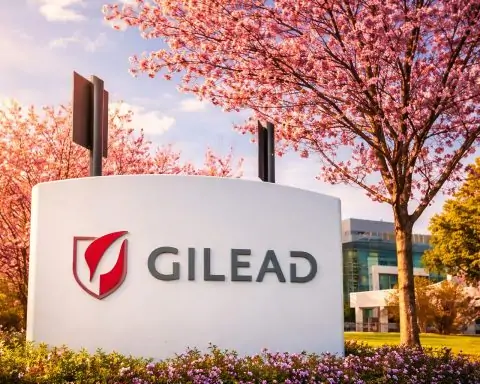- Armenia ended ArmenTel’s monopoly around 2005–2007, opening Armenia’s internet market to new ISPs and mobile operators.
- In 2013, Armenia removed the licensing regime for ISPs, allowing any company to provide internet after notifying the Public Services Regulatory Commission (PSRC).
- By 2022, more than 200 ISPs were officially registered in Armenia.
- In 2020, Armenia scored 88.5 out of 100 on the ITU ICT Regulatory Tracker, placing it in the advanced “fourth generation” regulation category.
- As of 2023, about 77% of Armenia’s population uses the internet.
- By 2021, 100% of Armenia’s settlements had 4G/LTE coverage.
- Fiber accounts for over 83% of fixed broadband connections in Armenia as of early 2024, with DSL rapidly shrinking.
- In Q4 2023, Viva commanded about 57% of mobile subscriptions, Team Telecom Armenia 25.6%, and Ucom 17%.
- In 2024 the Armenian government acquired a 20% ownership stake in Viva (formerly MTS Armenia) as a donation from the new owner.
- Starlink satellite internet went live in Armenia in March 2025, making it the 130th country to access the service.
Historical Development of Internet Infrastructure and Policies
Armenia’s journey to modern internet connectivity began in the 1990s with a single dominant telecom operator. After independence in 1991, the national operator ArmenTel (initially part-owned by Greece’s OTE, later by Russia’s VimpelCom) held a legal monopoly over telephony and internet services. This monopoly, granted in 1998, hindered early internet growth, as competitors were barred and infrastructure investments lagged [1] [2]. By the mid-2000s, however, reforms were underway. ArmenTel’s exclusive rights were effectively ended around 2005–2007, opening the market to new internet service providers (ISPs) and mobile operators [3]. The sector “saw rapid growth” once the monopoly was broken, with new players spurring competition and network expansion [4].
Key policy milestones accompanied this liberalization. A national telecom regulator, the Public Services Regulatory Commission (PSRC), was established to oversee the growing market. In 2013, amendments to the Law on Electronic Communication removed the old licensing regime for ISPs, allowing any company to provide internet services after simply notifying the PSRC [5]. This pro-competition policy dramatically lowered barriers to entry – by 2022, over 200 ISPs were officially registered in Armenia [6]. The government’s commitment to ICT development has been evident in strategic plans like the Digital Transformation Agenda 2018–2030 and initiatives to promote Armenia as a regional tech hub [7]. Throughout the 2010s, successive administrations invested in e-government services and regulatory improvements. Notably, Armenia scores 88.5/100 on the ITU’s ICT Regulatory Tracker (2020), placing its telecom regulation in the advanced “fourth generation” category driven by economic and social policy goals [8]. This strong regulatory framework and diaspora investment have laid the groundwork for expanding connectivity nationwide.
Current State of Internet Access (Residential and Business)
Internet access in Armenia today is widespread in urban areas and steadily improving in rural regions. In the capital Yerevan, high-speed broadband is common and public Wi-Fi hotspots abound, while secondary cities also enjoy growing coverage [9]. As of 2023, about 77% of Armenia’s population uses the internet, a dramatic rise from earlier decades [10]. Businesses are even more connected: 77% of enterprises provide internet access for employees, with near-universal connectivity in the IT sector (over 90% of firms) [11]. For residential users, fixed home broadband is popular in cities, whereas many rural households rely on mobile data due to limited wired infrastructure. Overall fixed-line broadband penetration stands at 18.5 subscriptions per 100 people [12], indicating that roughly one in five Armenians has a fixed home internet line. Meanwhile, mobile internet is nearly ubiquitous – Armenia’s mobile broadband penetration is about 103% (over one subscription per person on average) thanks to affordable smartphone data plans [13].
In terms of quality, connection speeds have improved markedly. According to Ookla’s Global Speed Index, by mid-2024 Armenia’s median fixed broadband speed was about 56.8 Mbps, while mobile data achieved a 27.6 Mbps median [14] [15]. These speeds reflect nationwide upgrades to fiber networks and 4G/5G mobile technology (discussed below). Still, a digital divide persists: urban users typically enjoy faster, more reliable service than rural users. Outside of cities, some villages still have only basic mobile internet and suffer from older equipment or fewer provider choices [16]. Affordability is generally good – by international metrics, Armenia’s internet prices are reasonable. A basic fixed broadband plan (≈5 GB data) costs about 3.3% of GNI per capita per month, and a 2 GB mobile data package costs only 0.8% of GNI per capita, indicating these services are within reach of the average consumer [17] [18]. Nonetheless, lower-income households may struggle with the cost of higher-speed plans, and efforts continue to ensure the benefits of connectivity reach all segments of society [19] [20].
Major Internet Service Providers and Market Share
Despite the large number of licensed ISPs, Armenia’s internet access market is concentrated in the hands of a few major companies. The fixed broadband sector is led by three dominant providers – Ucom, Telecom Armenia (branded as Team Telecom Armenia), and Rostelecom Armenia (recently rebranded as Ovio). Together these three serve the vast majority of home and business fixed-line subscriptions [21] [22]. Smaller ISPs (over 200 in total) exist, but they collectively account for only a minor share of the fixed internet market [23] [24]. The table below summarizes the top fixed broadband providers and their market positions as of 2023:
| Provider | Fixed Broadband Subscribers (2023) | Market Share (approx.) |
|---|---|---|
| Ucom | ~130,000 (fiber and DSL) | ~45% of fixed subscriptions [25] [26] |
| Telecom Armenia (Team) | 94,800 (Q4 2023) | 32.1% of fixed subscriptions [27] [28] |
| Rostelecom (Ovio) | ~64,000 | ~22% of fixed subscriptions [29] [30] |
| Other ISPs (200+ small) | ~10,000 (combined) | ~3% (niche local markets) |
Ucom – founded in 2007 – is the current fixed-broadband leader by both subscriber count and revenue. It operates an extensive fiber-optic network across Yerevan and other cities, after initially making Yerevan one of the world’s first fully fiber-connected capitals in 2009 [31] [32]. Telecom Armenia (Team) is the successor to the Beeline brand; since acquiring Beeline’s operations in 2020, Team has modernized its network and now holds roughly one-third of fixed subscribers [33]. Rostelecom Armenia, previously a subsidiary of Russia’s Rostelecom (now locally owned and called Ovio), focuses on fixed broadband and IPTV and has a strong presence especially in regional towns. Notably, fiber-optic technology has overtaken legacy DSL – as of early 2024, fiber connections account for over 83% of all fixed broadband lines in Armenia [34] [35], with DSL and other copper-based lines rapidly shrinking.
In the mobile internet arena, three mobile network operators serve the country: Viva-MTS (now Viva), Ucom, and Telecom Armenia (Team). Viva, historically known as VivaCell-MTS, is the largest with well over half the mobile subscriptions. In late 2023, Viva commanded about 57% of the mobile subscriber market (having around 2.3 million active SIMs) [36] [37]. Team Telecom held about 26% of mobile subscriptions (just over 1.04 million users) [38] [39], while Ucom made up the remaining ~17%. This breakdown is illustrated below:
| Mobile Operator | Mobile Subscribers (Q4 2023) | Market Share (Q4 2023) |
|---|---|---|
| Viva (formerly Viva-MTS) | ~2.3 million | 56–59% (market leader) [40] [41] |
| Team Telecom Armenia | 1,044,939 | 25.6% [42] [43] |
| Ucom | ~700,000 | 15–18% (estimated) |
Viva has been the dominant mobile ISP for years and launched Armenia’s first 5G pilot network. Telecom Armenia (Team) inherited Beeline’s mobile network and is investing heavily in upgrades, while Ucom entered the mobile market in 2015 by acquiring Orange Armenia and has since grown its share modestly. All three offer 2G/3G/4G services nationwide, with an increasing emphasis on 4G LTE and nascent 5G in the capital. Notably, the ownership landscape shifted in 2023–2024: the Russian parent company MTS sold its Armenian subsidiary (Viva-MTS) to a Western-investor group, prompting a rebrand to simply “Viva” [44] [45]. The Armenian government received a 20% stake in Viva as part of this deal, a strategic move to ensure national influence in a key telecom company [46] [47]. Meanwhile, Rostelecom’s Armenian branch was acquired by local investors (Electric Networks of Armenia) and rebranded as Ovio in 2022 [48]. These changes underscore a trend of “Armenianization” of the telecom sector’s ownership and a gradual decoupling from Russian corporate control, amid broader geopolitical shifts.
Technologies Used: Fiber, DSL, Mobile Data, Fixed Wireless, and 5G
A variety of technologies underpin Armenia’s internet access, with a clear evolution toward newer, faster platforms. On the fixed-line side, modern fiber-optic networks are now the backbone. The major ISPs have largely replaced the old copper infrastructure with fiber-to-the-home/building (FTTH/B) in cities and towns; as noted, over 83% of fixed broadband connections are fiber as of 2024 [49] [50]. This allows many urban customers to enjoy high speeds (100 Mbps to 1 Gbps plans) and reliable service. Legacy DSL (Digital Subscriber Line) over telephone wires still exists but is rapidly diminishing – DSL constitutes less than 17% of fixed lines and is mostly in a few areas not yet reached by fiber. Cable broadband (coaxial cable networks) is not widespread nationally, though a few local providers (e.g. Arpinet) use cable TV lines or Ethernet for internet in specific communities. For businesses and multi-tenant buildings, Ethernet LAN and dedicated fiber connections are common.
On the wireless side, Armenia has full nationwide cellular coverage. The country moved relatively quickly through mobile generations: 2G GSM networks appeared in the late 1990s, 3G (UMTS) launched around 2008 [51], and 4G/LTE service was first introduced by VivaCell-MTS in 2010 [52] [53]. Over the last decade, all operators expanded 4G, and by 2021 100% of Armenia’s settlements were covered by 4G+ mobile networks [54] [55]. This means even remote villages have at least a basic mobile data signal (often with LTE speeds), which has been crucial in bridging the digital divide. For example, as of January 2021 all 1,003 villages and towns had 4G service available [56] [57]. Fixed wireless access also plays a niche role: a few ISPs provide home internet via radio links or LTE routers (especially in areas where laying fiber is impractical). In one innovative case, a rural village called Shaghap built its own community network by stringing fiber optic cables from a nearby town, after being unable to get service through commercial providers [58] [59]. Such community-led projects, supported by Armenia’s Union of Operators and the Ministry of High-Tech, show how wireless and fiber solutions can be creatively combined to reach underserved areas.
5G – the next generation mobile technology – is in its infancy in Armenia but progressing. Viva-MTS (now Viva) launched the country’s first 5G trial network in central Yerevan in April 2023 [60]. This pilot made Armenia one of the first in the Caucasus with a live 5G signal, though coverage initially was limited to parts of the capital’s city center [61]. Soon after, the telecom regulator allocated 5G spectrum licenses: in May 2023 the PSRC announced that Telecom Armenia (Team) and MTS Armenia (Viva) had won tenders for 5G frequencies [62]. The licenses require the operators to launch 5G in Yerevan, Gyumri, and Vanadzor within two years [63] [64]. Rollout is already underway. By the end of 2023, 5G networks were partially operational in Yerevan and Gyumri [65] [66], and in 2024 a more extensive expansion began. Ucom, in particular, made a bold push: it completed the first phase of a 5G rollout covering nine cities (including Gyumri, Vanadzor, Dilijan, and others) by late 2024 [67] [68]. In early 2025, Ucom’s second phase extended 5G to 11 additional towns, bringing its 5G footprint to 20 regional cities beyond the capital [69]. This rapid deployment by Ucom – now offering 5G even in smaller cities like Aparan, Martuni, and Sisian – highlights the competitive drive to lead in new technology. Team Telecom, for its part, has partnered with Ericsson to upgrade its mobile infrastructure, aiming for a “smooth rollout” of 5G in the near future [70] [71]. By mid-2025, all three operators are expected to have live 5G in major urban areas, bringing ultra-fast wireless internet (with gigabit-level speeds and low latency) closer to mainstream availability.
Other technologies in use include satellite links (covered in a later section) and various backbone transit links. Armenia’s international internet connectivity relies on fiber-optic backbone cables that run north through Georgia and a secondary route south through Iran. Four major ISPs operate these backbone connections to the global internet [72]. The primary upstream routes go via Georgia to reach European networks, while a fiber link through Iran exists mainly as a backup path [73]. (In 2019, Ucom even negotiated a plan to create a new Persian Gulf–Black Sea fiber corridor via Armenia [74], which would enhance regional connectivity.) These few physical routes mean Armenia is somewhat vulnerable to outages – for instance, accidental cable cuts outside the country have caused multi-day internet disruptions in Armenia, as happened in January 2024 [75] [76]. Ensuring redundant and resilient infrastructure remains a priority as data demand grows.
Internet Penetration Rates, Speeds, and Pricing
Armenia has achieved solid growth in internet penetration, though it still trails some global benchmarks. Internet usage among individuals reached 77% of the population in 2023 [77], up from roughly two-thirds just a few years prior. This indicates that over three-quarters of Armenians are now online, whether via phone or computer. By comparison, neighboring Georgia has about 82% internet usage and Azerbaijan about 86% [78] [79], so Armenia is catching up but has room to grow to match the highest regional levels. Fixed broadband subscriptions have climbed as well – at 18.5 per 100 people [80], Armenia’s fixed broadband penetration is above the world average (around 15–17 per 100) but below Western and East Asian countries where 30+ per 100 is common. On the mobile side, however, Armenia has more active mobile broadband subscriptions than people (approximately 103 per 100 inhabitants) [81], reflecting widespread ownership of SIM cards and data plans, a pattern typical of many countries with affordable mobile data.
In terms of performance, Armenia’s internet speeds are firmly in the broadband category, though not yet top-tier globally. The median fixed-line download speed is about 43–57 Mbps (as of 2023–2024) [82] [83], which allows for HD streaming, video calls, and cloud applications with ease. Peak speeds can be much higher – both Ucom and Team Telecom offer gigabit fiber packages in Yerevan, and tests have shown some users getting hundreds of Mbps on fiber. Mobile data speeds are slightly lower: the median mobile download speed is around 25–28 Mbps [84] [85], sufficient for most smartphone uses. In global rankings, Armenia’s mobile internet was ranked 81st out of 111 countries in 2024, with an average mobile speed ~31 Mbps [86] [87]. This was behind all its immediate neighbors – Georgia ranked 68th (~38 Mbps) and Azerbaijan 49th (~54 Mbps) – indicating Armenia should improve mobile network capacity [88] [89]. (Notably, Armenia’s mountainous terrain and dispersed rural settlements can drag the average down, as operators must cover many difficult areas.) For fixed broadband, regional comparisons are mixed: Georgia and Azerbaijan have also rapidly deployed fiber in cities, so their urban fixed speeds are comparable or higher, but Armenia’s nationwide median is respectable and improving each year as fiber extends outward.
Pricing of internet service in Armenia is relatively affordable, thanks to competition among the main ISPs. Unlimited home broadband plans of 50–100 Mbps typically cost on the order of 10,000–15,000 Armenian drams per month (~$25–$40). Entry-level packages can be even cheaper – in fact, a few years ago it was noted that quality 24/7 internet could be had for as little as AMD 5,000–8,000 (about $10–$18) per month for a basic plan [90]. Since then, speeds have increased for similar price points. Mobile data is very cheap: 1 GB of mobile data can cost only a couple of dollars, and operators frequently bundle unlimited social media or overnight data in promotions. As cited earlier, the ITU’s affordability metrics show a basic fixed broadband plan costs around 3.3% of monthly GNI per capita, and a 2 GB mobile plan just 0.8% of GNI [91] [92]. These percentages are well within international affordability targets (the UN Broadband Commission advocates for <5% of income for entry-level broadband). However, higher-tier plans (e.g. premium fiber or very large mobile data packages) can be relatively more expensive, which may put them out of reach for low-income users. The government and ISPs have periodically addressed this by boosting speeds at the same price – for example, Ucom has upgraded customers to faster tiers at no extra cost in promotional campaigns [93]. Overall, Armenia’s consumers benefit from one of the more affordable internet markets in the post-Soviet region, though continued economic growth is needed to ensure even the poorest households can get online with high-speed service.
Government Policies, Investments, and Regulatory Landscape
The Armenian government plays an active role in shaping the digital connectivity landscape through policy, regulation, and direct investment. The PSRC (telecom regulator) ensures a pro-competitive environment, having eliminated licensing hurdles and kept the market open to new entrants [94] [95]. Armenia’s regulatory regime is considered robust and modern – as noted, it scored 88.5/100 on the ITU regulatory tracker, indicating “integrated regulation” aligned with social and economic development goals [96] [97]. This reflects an independent regulator with extensive intra-government collaboration, a model that has positioned Armenia as a regional leader in telecom governance [98] [99]. There are few legal or technical obstacles for ISPs; even public Wi-Fi providers can operate freely as long as they don’t charge users (charging for access requires a simple registration) [100]. Crucially, internet access in Armenia remains largely uncensored and unrestricted – the government does not generally block websites or shut down networks, except temporarily during wartime martial law or in rare cases of national security concerns [101] [102]. This commitment to internet freedom (notwithstanding some concerns about disinformation and surveillance) has helped foster a vibrant online ecosystem.
On the policy planning front, the government has outlined clear targets for expanding connectivity. One flagship goal is to bring broadband internet to all settlements by 2026 [103] [104]. In December 2023, the Ministry of High-Tech Industry reported progress to the Prime Minister: by 2026 an estimated 80% of urban and rural communities will have access to broadband (up from roughly 62% that had fixed broadband in 2021) [105] [106]. Achieving this involves incentivizing operators to build out networks in smaller villages and remote areas. The government has supported initiatives like the “Infrastructure for Investments” program, under which a new Tier III data center was launched in 2024 (the Ovio Data Center in Abovyan) to improve domestic internet infrastructure and services [107] [108]. Public investment has also extended to equity stakes – in 2024 the state accepted a 20% ownership stake in Viva (formerly MTS Armenia), as a donation from the new private owner, which Prime Minister Nikol Pashinyan hailed as a strategic move to increase public influence in the telecom sector [109] [110]. This partial nationalization is expected to “boost network infrastructure and technological innovations” by aligning the operator’s goals with national development priorities [111].
International organizations and finance institutions are partnering in Armenia’s digital development. The World Bank and United Nations have conducted Digital Economy assessments (DECA 2024) highlighting needs for improved rural access and digital literacy [112] [113]. The IFC and EBRD provided a $45 million financing package in 2022 to Telecom Armenia (Team) to expand high-speed broadband, aiming to connect 450,000 additional households with fiber and upgrade mobile networks for 1.1 million users [114] [115]. This investment explicitly focuses on rural connectivity and network quality improvements, illustrating how public and private sectors are aligning to close the urban-rural gap. The Armenian government has also introduced tech-friendly policies like tax incentives for small IT firms (easing the tax burden on startups) [116], and is fostering a startup ecosystem that indirectly benefits from better internet infrastructure.
In summary, Armenia’s regulatory landscape is one of encouragement and oversight: encouraging competition and investment, while overseeing fair play and strategic outcomes (like universal access). Going forward, the government’s role will likely include updating laws for new tech (5G, satellite services, data privacy) and possibly instituting rural broadband subsidy programs (currently, no direct subsidy exists for rural broadband rollout [117], so market forces and co-investment remain key). The close collaboration between the Ministry of High-Tech Industry, PSRC, and telecom companies – evidenced by joint projects such as the community network pilots – will continue to be vital in achieving Armenia’s digital connectivity ambitions.
Rural and Underserved Areas: Challenges and Initiatives
Bringing fast, reliable internet to Armenia’s rural villages and underserved regions has been a major challenge – one that is gradually being addressed through a mix of market expansion, community initiatives, and new technologies. Armenia’s geography features many mountainous, sparsely populated areas where laying fiber cables or maintaining cell towers is costly. These rural communities have historically had limited options, often relying on basic mobile connections. In the past, some villages only had 2G/3G cellular internet or even dial-up/satellite for connectivity, leading to a digital divide with urban centers. For example, as recently as a few years ago the village of Shaghap (Ararat province) “relied on mobile connectivity with data caps” and had no high-speed ISP willing to serve it due to the high infrastructure cost [118]. This lack of rural access has contributed to migration of youth to cities in search of opportunities [119].
Challenges: The key obstacles in rural connectivity include tough terrain for infrastructure, lower commercial return for private ISPs, and lower digital literacy in some remote populations. Even though, officially, by 2021 every settlement had some form of “broadband internet” available (largely thanks to 4G mobile coverage) [120], the quality and speed in small villages can be far inferior to Yerevan’s. The UN’s DECA 2024 report noted that while 88% of Armenia’s population lives within 10 km of a fiber-optic node, many smaller communities still lack fiber “last mile” connections [121] [122]. It also highlighted a gap in digital skills and literacy: rural areas have fewer training opportunities, leading to lower internet use and less benefit even when connections are present [123] [124]. Women and people with disabilities in rural regions face additional barriers like lack of relevant content or assistive technologies [125] [126]. These social factors mean that simply laying cables is not enough; parallel efforts in education and inclusion are needed.
Initiatives and Progress: The Armenian government and telecom operators have several initiatives to improve rural access. The most concrete goal is to extend broadband (wired or wireless) to all communities by 2026, with an interim target of 80% community coverage by that date [127] [128]. This implies connecting hundreds of villages that today might lack fiber or have only one spotty provider. To achieve this, operators are leveraging a mix of technologies: fiber build-outs along roadways (often with government-right-of-way support), microwave relay links to hard-to-wire villages, and expanding 4G/5G coverage in rural cell towers. The recent aggressive 5G rollouts by Ucom notably include small towns (Aparan, Artik, etc.) which ensures that even beyond the big cities, communities start getting next-gen wireless service [129] [130]. Moreover, Telecom Armenia’s partnership with Ericsson will modernize rural mobile base stations for better 4G coverage in the near term [131] [132].
At the community level, success stories have emerged. In Shaghap, the villagers took it upon themselves to solve their connectivity problem: guided by the Internet Society and the Union of Operators of Armenia, they built their own fiber network in 2021, laying over 18 km of fiber to link their village to the national grid [133] [134]. This project was supported by the Ministry and PSRC as a pilot for community networks, and it transformed Shaghap – the school now conducts online lessons, local businesses went online, and even a tech robotics lab was established after connectivity improved [135]. Residents of rural Shaghap, Armenia, benefitted from a community-built fiber network that brought high-speed internet to their previously isolated village [136] [137]. This grassroots project, supported by Armenia’s telecom ministry and local operators, enabled students to join online classes and businesses to access new markets, illustrating the potential of community initiatives in bridging the rural digital divide. Such models are now inspiring similar projects in other underserved areas, often turning libraries or schools into internet hubs for surrounding villages [138]. The Internet Society’s Armenia chapter, for instance, has a program equipping rural libraries with broadband and Wi-Fi, effectively creating community internet centers where none existed [139].
International aid also contributes: the IFC/EBRD financing to Team Telecom explicitly aims to expand fiber to rural households and improve 4G coverage outside cities [140] [141]. Additionally, universal service-type efforts are being considered; while there isn’t a formal rural broadband subsidy in place [142], the government sometimes uses direct funding for connectivity in schools or critical facilities in remote areas. All three mobile operators have participated in programs to cover Armenia’s border villages and high-altitude settlements with at least voice and basic data.
The combination of these efforts is gradually yielding results. Rural internet uptake is rising, and the gap in basic access is closing – every village has at least a mobile internet option, and an increasing number are getting fiber or fixed wireless options too. The advent of satellite internet (next section) is poised to further help the truly hard-to-reach spots. By focusing on both infrastructure and skills, Armenia is striving to ensure that being located in a mountain hamlet is no longer a barrier to being part of the global digital community.
Satellite Internet Availability and Development (Starlink and Others)
For some of Armenia’s most remote or infrastructure-poor areas, satellite internet offers a new hope for connectivity – essentially reaching the “final frontier” of coverage where terrestrial networks taper off. Traditionally, satellite internet in Armenia was used only sparingly, mainly by businesses or government offices in areas without reliable landline links. Older geostationary satellite services were costly, with high latency, and did not see widespread adoption among the public. However, the landscape has changed rapidly with the emergence of low-Earth orbit (LEO) satellite constellations.
In 2023–2025, Armenia made headlines by embracing SpaceX’s Starlink service. After months of regulatory and technical preparations, Starlink went live in Armenia in March 2025, making Armenia the 130th country/region to access the high-speed satellite internet network [143]. The Ministry of High-Tech Industry worked closely with Starlink to enable this launch, ensuring a “transparent and efficient partnership” without intermediaries [144]. The result is that even the most isolated Armenian mountain villages can now potentially have “fast and stable internet” by installing a Starlink satellite dish [145]. This is a transformative development: Starlink’s low-orbit satellites deliver broadband with low latency, suitable for video streaming and VPNs, which was not feasible with prior satellite options. The Armenian government has touted Starlink’s arrival as “a major step in expanding reliable internet across the country, including rural and hard-to-reach areas” [146]. Early adopters in Armenia report that Starlink can provide tens of Mbps speeds in locations that previously only had a spotty 3G signal.
Starlink’s introduction was somewhat ahead of schedule – initial projections had it coming in 2025, but accelerated efforts saw availability by late 2024 in test mode [147] [148]. By early 2025 it was officially operational countrywide. Armenian consumers can now order Starlink kits online, and anecdotal evidence suggests considerable interest from rural businesses (e.g. guesthouses in mountain areas using Starlink to offer Wi-Fi to tourists). One notable aspect is that the government facilitated this without attempting to route it through a state provider – indicating trust in open market access to satellite services.
Besides Starlink, other satellite providers are also on Armenia’s radar. OneWeb, another LEO constellation (backed by UK/EU interests), has been expanding coverage and could be an alternative or complement to Starlink in the region, though as of 2025 OneWeb’s service in Armenia is not yet public. There are also regional satellite services (from Russia, Europe, etc.) that provide VSAT internet; for example, some Armenian broadcasters and remote sensing stations use satellite links. However, none match the bandwidth or affordability of the new LEO options. The Armenian space agency (established recently) launched a small cube-satellite in 2022 for research, but domestic satellite communication projects are still nascent.
Looking forward, satellite internet is expected to play a niche but vital role. It is not likely to replace fiber or cellular in Armenia’s cities or even in most villages where fiber/5G will reach. But for truly isolated hamlets (especially in border highlands or the Syunik mountains) and for emergency backup connectivity, satellites provide a “final frontier” solution – ensuring no part of Armenia is left offline. If Starlink’s uptake is strong, it might prompt local telecom operators to partner in offering combined packages (e.g. a mobile-SIM plus Starlink bundle for remote areas). The successful collaboration so far (with Armenia’s regulator quickly approving Starlink’s operation) sets a positive precedent for integrating global satellite broadband into the national connectivity strategy [149] [150]. In essence, space-based internet has arrived in Armenia’s skies, complementing the fiber in its soil.
Future Outlook and Strategic Goals for Digital Connectivity
Armenia’s internet connectivity future looks promising, fueled by ambitious goals and ongoing modernization. The government’s Digital Transformation Agenda 2018–2030 envisions the country as a fully connected digital economy, with accessible, high-speed internet as the foundation for e-governance, tech entrepreneurship, and social inclusion. By 2030, Armenia aims to have near-universal internet usage (well above 90% of the population) and to eliminate the urban-rural digital gap. Achieving these goals will involve several key developments:
- Complete National Broadband Coverage: Building on the 2026 target for 100% of settlements with broadband access, Armenia will continue pushing fiber deeper into the regions. We can expect the current 80% coverage plan [151] [152] to extend toward 100% by the end of the decade, meaning every community, down to the smallest village, should have a local broadband access point (whether through fiber, wireless, or satellite). This will likely involve public-private partnerships and possibly the creation of a Universal Service Fund to finance last-mile connections in non-profitable areas.
- 5G Rollout and Beyond: By the mid-2020s, 5G will become more prevalent in Armenia’s telecom networks. The license requirements mean that by 2025, Yerevan, Gyumri, and Vanadzor will have live 5G from multiple operators [153], and as seen with Ucom’s expansion, many other cities are coming online with 5G [154]. Over the next few years, we can anticipate nationwide 5G coverage, at least in all urban and major rural centers, with at least 60% of the territory covered (the government has indicated 5G should cover 60% of every urban settlement’s territory in the coming rollouts [155]). This will unlock advanced use-cases such as IoT deployments in agriculture, smart city applications, and better connectivity for Armenia’s burgeoning tech industry. By the late 2020s, talk may turn to 6G on the horizon, though globally that is expected around 2030. Armenia will seek to stay in step with global wireless technology trends.
- Infrastructure Upgrades and Resilience: Future plans include improving international bandwidth and redundancy. The Persian Gulf–Armenia–Georgia internet transit link, once completed, will diversify Armenia’s upstream connections beyond the fragile Black Sea cables [156] [157]. More data centers (like the Tier III facility launched in 2024) are anticipated, making Armenia a regional data hosting hub and reducing latency for local users [158] [159]. The country will also invest in power grid upgrades to support these data centers, as noted in strategy documents emphasizing the need for reliable energy for digital growth [160] [161]. In addition, the government is mindful of cybersecurity and has been working on national strategies for secure and reliable networks (for example, creating a national Computer Emergency Response Team and bolstering cyber defense after some attacks in 2020) [162] [163]. A resilient internet means both physical redundancy and secure, well-managed networks.
- Digital Literacy and Inclusion: Alongside infrastructure, Armenia’s future connectivity plans focus on people. There are initiatives to vastly improve digital skills training in schools and communities, ensure equal internet access for women and disadvantaged groups, and promote local content creation so that the internet is relevant to Armenian users in their own language [164] [165]. By increasing the value people can derive from internet access (such as e-learning, telemedicine, e-commerce in rural crafts, etc.), the government hopes to see higher adoption and more meaningful usage, not just passive consumption.
- Regional and Global Integration: Finally, Armenia aspires to measure its progress against global benchmarks. The country already compares favorably in some aspects (for instance, a higher ICT Regulatory score than some neighbors [166]). In the future, we might see Armenia climb rankings like the ITU ICT Development Index or DESI (Digital Economy and Society Index). Regionally, it seeks to not lag behind Georgia or Azerbaijan in connectivity stats – a bit of a healthy competition has arisen, as seen by media noting when Armenia’s mobile speeds trail its neighbors [167] [168]. The strategic goal is to have Armenian internet speeds, penetration, and prices at least on par with or better than its Caucasus peers and to approach European Union averages by 2030.
In summary, the outlook for Armenia’s internet access is one of continued modernization and expansion. Fiber will reach nearly every home that wants it, 5G (and later technologies) will blanket the country, and even the farthest mountaintop can be connected via satellite. The phrase “from fiber to the final frontier” encapsulates this trajectory: fiber-optic cables crisscrossing the nation and satellite links extending connectivity to the remotest frontiers. With strong political will and collaborative industry efforts, Armenia is on track to transform into a fully connected society, leveraging the internet as a cornerstone of its economic growth, education, and innovation in the years to come.
Comparative Analysis: Armenia vs. Neighbors and Global Benchmarks
When evaluating Armenia’s internet access in a regional and global context, a mixed picture emerges – one of significant progress with some remaining gaps.
Penetration and Usage: Armenia’s ~77% internet usage rate in 2023 sits between that of its Caucasus neighbors: slightly below Georgia (~82%) and Azerbaijan (~86%) [169] [170], but well above some larger economies like Iran (around 70%) or global average (~66%). It’s on par with many Eastern European countries in terms of the share of citizens online, though trailing Western Europe and North America (which often exceed 90%). The country’s mobile subscription penetration (over 100%) is similar to regional peers – Georgia and Azerbaijan also report roughly 100% or more mobile penetration, indicating a saturated mobile market everywhere. Where Armenia lags a bit is fixed broadband penetration (18.5 per 100 people) [171]. This is lower than, say, Russia (~25) or EU countries (often 30-40 per 100), though higher than some Eurasian peers like Georgia (which has been around 17-18 per 100) or Iran (~12). The relatively lower fixed uptake in Armenia is partly compensated by higher mobile broadband usage – many Armenians have skipped owning a fixed line in favor of using mobile data for internet access.
Speed and Quality: In terms of speed, Armenia’s performance is respectable but has room to grow, especially on mobile. As noted, Armenia’s mobile data speeds rank 81st globally (31 Mbps avg) while Georgia ranked 68th (38 Mbps) and Azerbaijan 49th (54 Mbps) [172] [173]. Turkey and Iran also surpassed Armenia in mobile speed rankings in 2024 [174] [175]. The bright spot: Armenia actually beats some larger countries like Russia, which was 91st (25 Mbps) [176] [177]. For fixed broadband, global rankings from Ookla or others are not explicitly quoted, but given the median ~50 Mbps, Armenia likely sits around the middle globally – far behind world leaders like Singapore (300+ Mbps) but comparable to or above the world median. The increasing fiberization (83% fiber connections [178] [179]) suggests Armenia could leapfrog in fixed speeds soon, possibly outranking neighbors if the fiber networks are fully leveraged. One global index worth noting is the Affordability Drivers Index or ITU price baskets: Armenia’s internet affordability is among the better in lower-middle income countries, with 1 GB of mobile data costing much less than 1% of average income (meeting the UN target) and fixed broadband around 3.3% of income [180] [181]. This is better than many countries of similar GDP per capita, indicating Armenia punches above its weight in making internet affordable.
Market and Policy: Regionally, Armenia stands out for its competitive telecom market structure. Unlike some neighboring countries that have a dominant state-owned telecom (Azerbaijan’s Aztelekom, Iran’s TIC, etc.), Armenia’s market is fully privatized and diversified among multiple operators [182] [183]. This has arguably led to better service and innovation. For example, Armenia had three mobile operators competing since the late 2000s, whereas Azerbaijan had effectively two until recently. On the policy front, Freedom House’s “Freedom on the Net” report scores Armenia as having a freer internet than Iran or Turkey (which impose heavy censorship) [184]. Even compared to Georgia, Armenia has had slightly more issues with disinformation and occasional wartime restrictions, but overall remains in the “free” category online [185] [186]. The independent regulation and lack of significant barriers to new ISPs is somewhat unique in the region, potentially giving Armenia an edge in flexibility to adopt new technologies like community networks or Starlink quickly.
Global Benchmarks: On a broader scale, Armenia’s situation is similar to many developing countries that have managed to achieve broad 4G coverage and moderate internet uptake, but are striving to reach the next level of digital advancement. Its internet user percentage (~77%) is close to the global average (~66%) and on track towards the global goal of “universal and affordable internet” (defined by the UN as 75% of households online by 2025). In many ways, Armenia can be seen as a success story in the CIS/Eurasia region – it avoided the entrenchment of a single telecom monopoly (after early 2000s reforms) and fostered enough competition to drive down prices and roll out modern infrastructure like LTE and fiber widely. Global indexes like the Network Readiness Index or E-Government Development Index consistently rank Armenia in a mid-tier globally, often second to Georgia in the Caucasus but ahead of many other post-Soviet states.
In conclusion, compared to its neighbors, Armenia is neither at the top nor at the bottom – it’s a solid middle performer leaning upwards. It leads in some aspects (regulation, fiber deployment proportion) while lagging slightly in others (mobile speeds, penetration rates). The global perspective shows Armenia has made the leap from a country with very limited connectivity 20 years ago to one where internet access is commonplace and progressively improving. The ongoing efforts (5G, rural fiber, satellite integration) should further boost Armenia’s standing, perhaps setting it up to emerge as a regional leader in internet access in the near future.
Sources:
- Freedom House – Freedom on the Net: Armenia (2023–2024 reports) [187] [188] [189] [190]
- Public Services Regulatory Commission of RA – Annual Reports (2020–2023) [191] [192]
- ARKA Telecom News – Armenia 5G Launch, Market Share, and Broadband Coverage updates [193] [194]
- Armenpress – Team Telecom Armenia Q4 2023 Results [195] [196]
- Internet Society – Community Network in Shaghap, Armenia [197] [198]
- IFC Press Release (2022) – IFC & EBRD financing for Telecom Armenia [199] [200]
- BM.ge News – Speedtest Global Index: Armenia vs Neighbors (Aug 2024) [201] [202]
- MassisPost – Starlink Launches in Armenia (Mar 2025) [203] [204]
- Azatutyun (RFE/RL) – ArmenTel Monopoly and Market Liberalization [205]
- BuddeComm Report – Armenia Telecoms Overview 2024 [206] [207]
References
1. hetq.am, 2. www.azatutyun.am, 3. www.azatutyun.am, 4. www.azatutyun.am, 5. freedomhouse.org, 6. freedomhouse.org, 7. www.budde.com.au, 8. armenia.un.org, 9. freedomhouse.org, 10. freedomhouse.org, 11. arkatelecom.am, 12. freedomhouse.org, 13. freedomhouse.org, 14. freedomhouse.org, 15. freedomhouse.org, 16. freedomhouse.org, 17. freedomhouse.org, 18. freedomhouse.org, 19. freedomhouse.org, 20. freedomhouse.org, 21. freedomhouse.org, 22. freedomhouse.org, 23. freedomhouse.org, 24. freedomhouse.org, 25. freedomhouse.org, 26. freedomhouse.org, 27. armenpress.am, 28. armenpress.am, 29. freedomhouse.org, 30. freedomhouse.org, 31. galaxygroup.am, 32. galaxygroup.am, 33. armenpress.am, 34. www.budde.com.au, 35. www.budde.com.au, 36. freedomhouse.org, 37. armenpress.am, 38. armenpress.am, 39. armenpress.am, 40. freedomhouse.org, 41. armenpress.am, 42. armenpress.am, 43. armenpress.am, 44. www.budde.com.au, 45. www.budde.com.au, 46. www.thecaliforniacourier.com, 47. www.thecaliforniacourier.com, 48. freedomhouse.org, 49. www.budde.com.au, 50. www.budde.com.au, 51. hetq.am, 52. itel.am, 53. www.viva.am, 54. freedomhouse.org, 55. freedomhouse.org, 56. freedomhouse.org, 57. freedomhouse.org, 58. www.internetsociety.org, 59. www.internetsociety.org, 60. freedomhouse.org, 61. freedomhouse.org, 62. freedomhouse.org, 63. freedomhouse.org, 64. freedomhouse.org, 65. freedomhouse.org, 66. freedomhouse.org, 67. en.168.am, 68. en.168.am, 69. a1plus.am, 70. arkatelecom.am, 71. arkatelecom.am, 72. freedomhouse.org, 73. freedomhouse.org, 74. freedomhouse.org, 75. freedomhouse.org, 76. freedomhouse.org, 77. freedomhouse.org, 78. bm.ge, 79. bm.ge, 80. freedomhouse.org, 81. freedomhouse.org, 82. freedomhouse.org, 83. freedomhouse.org, 84. freedomhouse.org, 85. freedomhouse.org, 86. bm.ge, 87. bm.ge, 88. bm.ge, 89. bm.ge, 90. hetq.am, 91. freedomhouse.org, 92. freedomhouse.org, 93. arkatelecom.am, 94. freedomhouse.org, 95. freedomhouse.org, 96. armenia.un.org, 97. armenia.un.org, 98. armenia.un.org, 99. armenia.un.org, 100. freedomhouse.org, 101. freedomhouse.org, 102. freedomhouse.org, 103. armenia.un.org, 104. armenia.un.org, 105. arkatelecom.am, 106. arkatelecom.am, 107. armenia.un.org, 108. armenia.un.org, 109. www.thecaliforniacourier.com, 110. www.thecaliforniacourier.com, 111. www.thecaliforniacourier.com, 112. armenia.un.org, 113. armenia.un.org, 114. www.ifc.org, 115. www.ifc.org, 116. www.budde.com.au, 117. www.worldbank.org, 118. www.internetsociety.org, 119. www.internetsociety.org, 120. freedomhouse.org, 121. armenia.un.org, 122. armenia.un.org, 123. armenia.un.org, 124. armenia.un.org, 125. armenia.un.org, 126. armenia.un.org, 127. arkatelecom.am, 128. arkatelecom.am, 129. en.168.am, 130. en.168.am, 131. arkatelecom.am, 132. arkatelecom.am, 133. www.internetsociety.org, 134. www.internetsociety.org, 135. www.internetsociety.org, 136. www.internetsociety.org, 137. www.internetsociety.org, 138. www.isocfoundation.org, 139. www.isocfoundation.org, 140. www.ifc.org, 141. www.ifc.org, 142. www.worldbank.org, 143. massispost.com, 144. massispost.com, 145. jam-news.net, 146. massispost.com, 147. www.forbes.com, 148. www.forbes.com, 149. massispost.com, 150. massispost.com, 151. arkatelecom.am, 152. arkatelecom.am, 153. freedomhouse.org, 154. en.168.am, 155. arkatelecom.am, 156. freedomhouse.org, 157. freedomhouse.org, 158. armenia.un.org, 159. armenia.un.org, 160. armenia.un.org, 161. armenia.un.org, 162. freedomhouse.org, 163. armenia.un.org, 164. armenia.un.org, 165. armenia.un.org, 166. armenia.un.org, 167. bm.ge, 168. bm.ge, 169. bm.ge, 170. bm.ge, 171. freedomhouse.org, 172. bm.ge, 173. bm.ge, 174. bm.ge, 175. bm.ge, 176. bm.ge, 177. bm.ge, 178. www.budde.com.au, 179. www.budde.com.au, 180. freedomhouse.org, 181. freedomhouse.org, 182. freedomhouse.org, 183. freedomhouse.org, 184. freedomhouse.org, 185. freedomhouse.org, 186. armenia.un.org, 187. freedomhouse.org, 188. freedomhouse.org, 189. freedomhouse.org, 190. freedomhouse.org, 191. freedomhouse.org, 192. freedomhouse.org, 193. freedomhouse.org, 194. arkatelecom.am, 195. armenpress.am, 196. armenpress.am, 197. www.internetsociety.org, 198. www.internetsociety.org, 199. www.ifc.org, 200. www.ifc.org, 201. bm.ge, 202. bm.ge, 203. massispost.com, 204. massispost.com, 205. www.azatutyun.am, 206. www.budde.com.au, 207. www.budde.com.au










